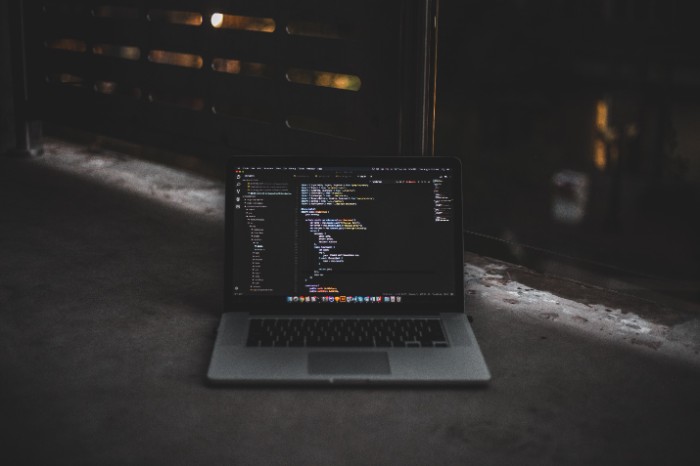Are you looking for a guide on how to learn Java with no programming experience? That’s okay! This guide is for you. In it, we will teach you everything you need to know about Java, from the basics to more advanced concepts. We will also provide tips on learning Java if you have no prior programming experience. By the end of this guide, you will be ready to start coding your own Java applications!
Tips For Learning Java If You Have No Experience In Programming
If you’re interested in learning Java but have no prior experience in programming, don’t worry – it’s not as difficult as it may seem at first. With perseverance and the right approach, you can quickly pick up Java programming basics and start using them in your projects. Here are a few tips to get you started:
Learn More: How Long Does It Take To Learn Java?
Use A Good IDE
If you’re learning Java, one of the best pieces of advice is to use a good IDE. An Integrated Development Environment (IDE) is a software application that provides developers with the tools to write, edit, and debug code. A good IDE will have syntax highlighting and autocompletion features, making your code easier to read and write. In addition, many IDEs come with built-in. While many different IDEs are available, some of the most popular choices for Java development include Eclipse and IntelliJ IDEA.
Join The Java Community
If you’re starting to learn Java programming, there’s no need to feel overwhelmed. Instead, join the Java community, and you’ll have access to countless resources to help you get started, including tutorials, articles, video lessons, and more. You can also join online forums where experienced Java programmers are always happy to answer questions and offer advice. In addition, many IDEs (integrated development environments) come with built-in support for Java, making it easier to get started with this popular programming language. Finally, don’t forget to take advantage of the many free and open-source libraries available for Java programmers. With all of these resources, learning Java will be a breeze.
Familiarize Yourself With The Basics of Java

Familiarizing yourself with the basics of Java is crucial if you have no experience in programming. By doing this, you will be able to understand the terms and symbols used in the language. Here are some of the basics of Java:
Syntax
The syntax is the basic foundation of most preferred programming languages – it’s a set of rules that defines how the language should be written and structured. For example, in Java, Syntax defines how a Java program should be written and includes things like how variables and methods should be named, how code should be indented, and how comments should be used.
Variables and Data Types
A key strength of Java is its ability to manage data. In Java, data is stored in variables, named containers that can hold a single value. There are different types of variables, including integer, float, and string variables. Each variable has a specific range of values that it can store. For example, an integer variable can store any whole number between -2147483648 and 2147483647. In addition to managing data, Java enables developers to control the execution flow through conditionals and loops. This makes it possible to create sophisticated programs that can perform complex tasks.
Loops and Conditionals
Loops and conditionals are two crucial concepts in programming. Loops allow you to repeat a block of code multiple times, which can be extremely useful for tasks like iterating through an array or processing a large amount of data. Conditionals, on the other hand, allow you to execute different blocks of code depending on whether a specific condition is met. For example, you might use a conditional to check if a user inputted a valid email address before adding it to a database.
Methods
Methods are one of the basic building blocks of the Java runtime environment. A method is a self-contained block of code that performs a specific task. Methods can take parameters; values passed into the method when it is called. They can also return values, which are the results of the computation that the method performs. In addition to performing computations, methods can print output to the screen or read input from the user.
Classes and objects
Classes are templates used to create objects, while objects are instances of classes. They have state and behavior. Fields represent the state, and methods represent behavior. Classes can contain other classes, and objects can communicate using messages. Messages are sent using method calls. When a message is sent, the object that receives the message executes the method associated with the message. Java is an object-oriented programming language.
Learn More: How Long Does It Take To Learn C++?
Learn More Advanced Java Concepts
Inheritance
Inheritance is a powerful tool in Java that allows developers to create new classes built upon existing ones. By inheritance, we can create subclasses that inherit all the attributes and behavior of the superclass and can add their unique elements. This allows for a great deal of flexibility and reuse of code, which can save time and effort in the long run.
Exception Handling
Exception handling allows you to manage errors and ensure that your program continues to run smoothly. Exception handling has three main parts: try-catch blocks finally blocks, and throw statements. Try-catch blocks are used to enclose code that might throw an exception. Finally, blocks are used to execute code regardless of whether an exception is thrown. Throw statements are used to throw an exception explicitly.
Generics

Generics were introduced in Java 5.0 to provide type safety and make code more readable. Generics allow us to create a single class or method that can work with different data types. For example, we can create a single sort() method to sort data of different types – integers, strings, etc. Before Generics, we had to create different sort() methods for each data type. Generics also help to avoid casting errors at compile time.
Lambdas and Streams
Lambdas allow you to create anonymous functions, which can be used to simplify code and make it more readable. Streams provide a way to process data declaratively, making it easier to parallelize code and improve performance.
Collections
Without collections, storing and manipulating data effectively would be difficult. The Collections Framework is a set of classes and interfaces that provide standard implementations of commonly used data structures. Collections can be divided into two main categories: list-based structures and map-based structures. List-based structures include arrays, linked lists, and array lists. Map-based structures include hash tables and trees.
Learn More: How Long Does It Take To Learn ASL?
Stay Up-To-Date On New Features And Changes

Sun releases a new version of the Java platform now and then. Sometimes these releases include significant changes, such as new language features or support for new platforms. As a result, it’s important to stay up-to-date on the latest release of Java, especially if you’re starting. You can do this by subscribing to the Java mailing list or following the Java blog. In addition, each release of Java tutorial is accompanied by extensive documentation that describes the new features in detail. Reading this documentation is a great way to learn about the platform’s capabilities and discover what’s changed since the last release.
Learn More: How Long Does It Take To Learn SQL?
Conclusion
Learning Java can seem daunting, but it can be learned relatively quickly with patience and perseverance. The key is to start small and build up your knowledge gradually. Don’t try to learn everything at once—it’s simply not possible. And don’t be afraid to ask for help when you need it. There are plenty of resources available online and offline that can help you on your journey to becoming a Java programmer.
